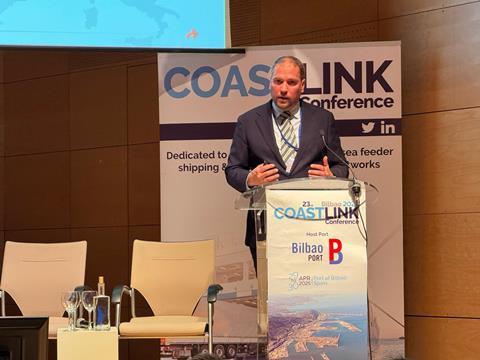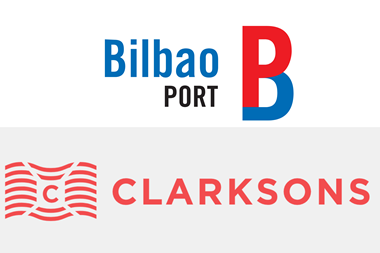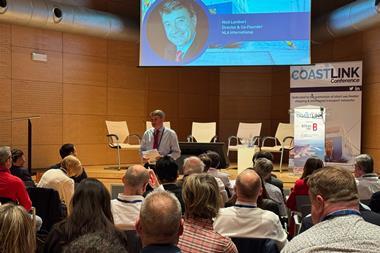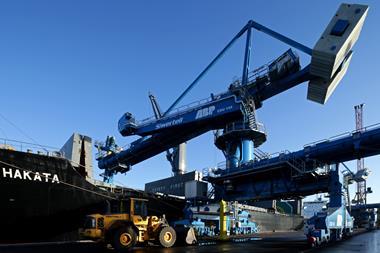For the last two to three years demand for short sea shipping has been on the up, said Johan-Paul Verschuure, director, Rebel Ports & Logistics, who argued on the first day of Coastlink, that the sector is experiencing somewhat of a renaissance at last.

“For the last few decades, the market has been relatively stable, but the last two to three years have seen the market moving with healthy demand – there are now new vessel orders to replace the ageing fleet. Countries are also providing subsidies to green the subsea segment.”
And in more good news, shortsea infrastructure developments are picking up pace - Mr Verschuure pointed to the new Ro-Ro facilities in Immingham UK and CLdN buying Broekman terminal in Rotterdam as two good examples.
Trade off
But there are still barriers to overcome. A new era of tariffs seems to be approaching and strategic independence and short supply chains versus longer global supply chain are traded off with some cost savings.
“There is also spillover from US tariff issues, cooling macro-economic conditions and incoming fuel regulations to be aware of,” said Mr Verschuure.
But with challenge also comes opportunity.
Although Eurozone goods are being put under pressure from US import tariffs, there is the potential for rerouting via Canadian/Mexican ports or transhipment options in the Caribbean with European orientated feeder operators.
This of course could be beneficial in creating new trading partners (if the tariffs stay in place) said Mr Verschuure, while the shift to domestic production rolls along slowly in the background.
For some, this may draw similarities with the Covid pandemic and trade disruptions spilling over to the short sea sector.
One of the main concerns is what will happen with blank sailings during this so-called ‘tariff war’.
Blank sailings cause imbalances in the sector with redeployment, but how efficient will redeployment be at following shifts in demand or sailings at low utilisation levels?
Mr Verschuure said that regulatory framework will play an increasingly important role in shaping the sector over the next few years, especially with the impact of rising fuel costs.
Fuel EU and IMO carbon intensity measures will increase costs for renewable fuels but will be offset by penalty measures and compensation for using greener fuels, which should help to lower costs.
But still, new and existing regulation will impact on the market heavily and mitigations need to be made to reduce fuel costs wherever possible.
Mr Verschuure said that renewable fuel availability in ports will become a differentiator as shipping lines rely on it to reduce penalties.
As such larger investments will be required in the production, supply and storage of these fuels for bunkering and new novel ways will have to be developed to overcome port space constraints.
“Other measures for reducing fuel costs, such as OPS, wind assisted sailing and friction reducing measures will become even more interesting and ports need to be able to facilitate this effectively,” said Mr Verschuure.
Perhaps the final consideration to make is that the push for shortsea vessels to become more efficient and greener will require additional shipyard capacity and new knowledge skills for every stakeholder.
The next few years will be pivotal for sure.









